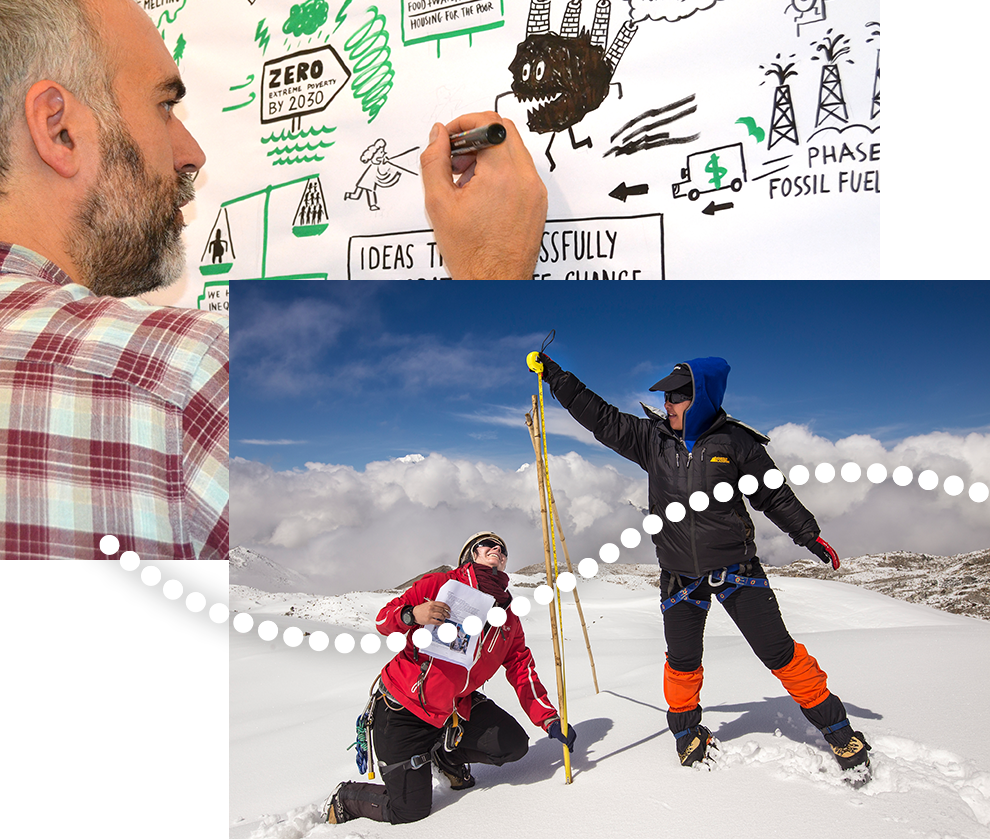Assessing transboundary climate risks under the UNFCCC Global Stocktake

Introduction
Transboundary climate risks remain lacking from the UNFCCC Global Stocktake (GST); actions must be taken now and for the next GST to address this gap.
The GST is the primary international mechanism to systematically track global progress towards the goals of the Paris Agreement, including the goal on adaptation. The process should enable countries and stakeholders to understand collective progress and gaps. As the first GST concludes at COP28, the outputs of the process should explicitly recognize that an important part of the picture is missing. This moment also represents an opportunity to assess the barriers to systematically track global progress in building resilience to transboundary risks.
This brief distils relevant insights from this year’s assessment, The Global Transboundary Climate Risk Report and complements them with perceptions from expert interviews with international scientific and climate policy experts, to reveal the scientific, technical, political and procedural barriers to including transboundary climate risks into the GST. It presents proposals to overcome these barriers and lay the foundations for redressing the “transboundary gap” in the second GST in five years’ time, as well as to enhance international cooperation for climate action in the crucial intervening years.
This article is an abridged version of the original text, which can be downloaded from the right-hand column. Please access the original text for more detail, research purposes, full references, or to quote text.
What should happen now?
With so little time left and so much for Parties to do before COP28, it would be challenging to fill in this gap for the first GST. However, two important actions can and must take place in the short term, either at COP28 or immediately after in the conclusion of the first GST:
- Explicitly recognize that a complete understanding of the transboundary and cascading nature of climate risk is lacking, and that without this, the GST is likely to overestimate resilience to climate change and overstate progress towards meeting the global goal on adaptation.
- Acknowledge and assess the scientific and technical, political and procedural barriers to systematically tracking global progress in building resilience to transboundary climate risks. Adopt recommendations to address them, to close the “transboundary gap” for the second GST and so lay the foundation for a more complete and accurate stocktake five years from now.
What needs to happen for the next Global Stocktake?
The next GST needs to provide continued support for both policymakers and scientists in their effort to tackle transboundary climate risks. Interviews with a series of policy and scientific experts could help move forward this remit, by identifying important enablers that are required to harness this opportunity for making the GST process have greater impact.
Policymakers’ needs
- Strengthen the evidence base – policymakers need a grounded body of evidence on transboundary climate risks. Highlighting this policy demand should initially serve to raise awareness among negotiating teams from all countries, with the ultimate aim of equipping Parties with a detailed understanding of the most prominent transboundary climate risks requiring their attention (i.e. those of high magnitude for a particular country, across sectors and scales).
- Develop guidance – regardless of the collection and reporting process adopted, policymakers need guidance on how to further consider and assess transboundary climate risks within the GST process. Guidance should include the identification of concrete targets and indicators to track transboundary climate risks and related responses in building resilience to them.
- Manage diplomatic challenges – in view of the second GST, focused discussions should take place between Parties on the important diplomatic issues to which transboundary climate risks give rise.
- Develop policy instruments – the most appropriate policy instruments should be defined for collecting, reporting, and synthesizing information about transboundary climate risks (including transboundary maladaptation).
To explore policymakers’ needs in more detail please refer to pages 3-5.
Needs from the scientific community
- Build sets of indicators – scientists need indicators to assess the current state of transboundary climate risks and track changing levels over time. Attempts to do so face significant conceptual and methodological challenges related to capturing the high degree of complexity and uncertainty associated with cross-border systems, as well as the attribution of changes to climate-related triggers of cascading and compounding processes.
- Develop prospective scenarios based on expert judgement – future trends in transboundary climate risks need to be assessed under various warming scenarios. Moving towards a scientific, comprehensive and global understanding of future transboundary climate risks will be challenging – not least because it requires projecting comparable data across diverse types of risk. In such a context, the climate research community increasingly recognizes the high value of expert judgement methods
- Rely on serious games to design adaptation pathways – identifying adaptation strategies is not about defining the “right” option now (which will be effective over a long time frame) but rather understanding how to sequence various options over time. Serious games can help bring scientists and decision-makers together to identify relevant policy domains and instruments and discuss potential ways to sequence adaptation options over time.
To explore needs from the scientific community in more detail please refer to pages 5-6.
Conclusion and recommendations
Based on experts’ opinions on the scientific feasibility and policy relevance of assessing transboundary climate risks as part of the GST, the authors present recommendations for the outputs for the first GST and concrete next steps that would help close the “transboundary gap” in the second GST by 2028:
- The outputs of the first GST should call for the creation of an evidence base on transboundary climate risks, ideally through existing platforms (e.g. weADAPT and Adaptation Without Borders), to collect case studies from different world regions and sectors.
- The outputs of the first GST should encourage Parties to discuss the most relevant instrument(s) to enhance reporting of transboundary risks to the GST.
- The outputs of the first GST should call for the preparation of guidelines to drive the inclusion of transboundary climate risks in the second cycle. The guidelines should also clarify who should carry out this reporting.
- The outputs of the first GST should encourage greater cooperation on transboundary climate risks and related adaptation at bilateral, regional and international scales and call for mechanisms to ensure that adaptation is just and does not enhance the resilience of some at the expense of others.
To explore the recommendations in more detail please refer to page 7 of the brief.
Further resources
- Suggested Citation:Magnan, A.K., Tanguy, A., Vallejo, L., Harris, K., Davis, M., and Klein, R. (2023). Assessing transboundary climate risks under the UNFCCC Global Stocktake. Adaptation Without Borders Discussion Brief. Available at https://adaptationwithoutborders.org/research-and-evidence
Related resources
- Entry points for integrating transboundary climate risks in the global goal on adaptation
- The Global Transboundary Climate Risk Report
- An African perspective on transboundary and cascading climate risks
- Enhancing cooperation to address cascading climate risks in the Hindu Kush Himalaya
- New risk horizons: Sweden’s exposure to climate risk via international trade

(0) Comments
There is no content